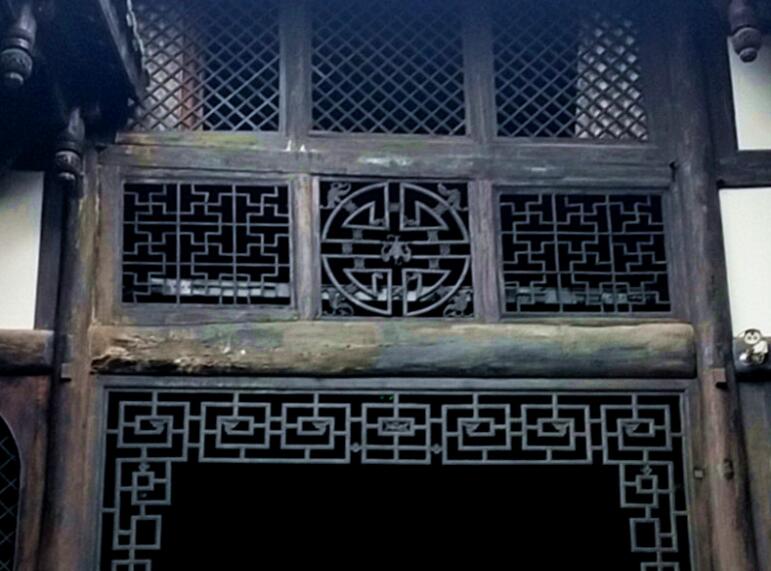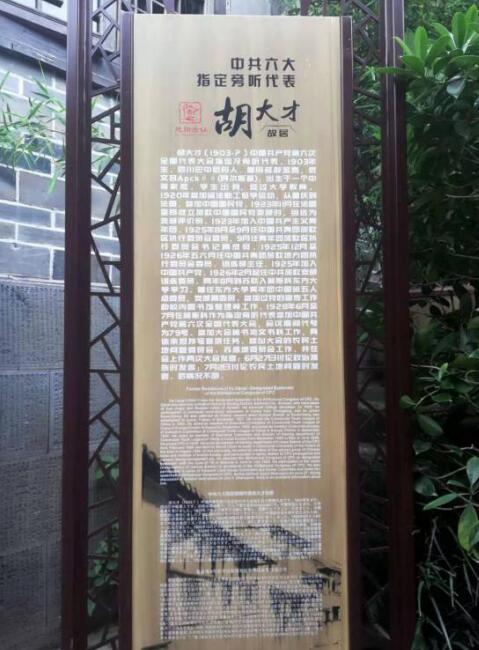Built during the reign of emperor qianlong of the qing dynasty, the hujia courtyard has a history of more than 220 years.
The former part of the hujia courtyard is the original old building, while the former part was renovated and restored in 2013. The whole building is a two-step quadrangle courtyard, with two courtyards in the front and back. The overall structure of the bridge, xiaoqingtile xieshan roof, is the north sichuan ganlan building. The whole hu courtyard, with a "one 'ancient' two 'red' three 'jing'" can include its characteristics.
A "ancient" : it has a long history, according to the expert appraisal of sichuan architecture institute, here the oldest is the backyard view balcony, the system began in the song dynasty, has a history of more than one thousand years. The erjin building was built in the qianlong period of the qing dynasty and has a history of more than 200 years!
Two "red" : this red is not to say the color, but the red culture here. Hu family is a family with red blood, the descendants of the hu family hu dacai, together with liu bojian, liu bocheng went to Moscow to participate in the six sessions of the communist party of China, after returning home has been participating in the revolutionary movement.

Three "jing" : there is a wood carving art in the first courtyard of hujia courtyard. It is the treasure of hujia courtyard and the only remaining wood carving art in sichuan by sichuan institute of archaeology. In the middle of the wood carving is carved five bats, vivid, on behalf of the "five blessings"; Carved in the bat around the twelve roses, meaning "month auspicious"; In left and right sides is "double happy window", in double happy window square four positive grid is called "ruyi case", just be two horizontal two vertical constitute in perfect order "well" word, take meaning "good well is continuous"; What is embedded with the tic-tac-toe case is the Buddhism's anti-rotation ten thousand word thread, and formed the good meaning of "all the best"; It and the middle circle of the "great blessing" echo from afar, constitute "ten thousand blessing"!
The hu family was a major trader of tung oil in the ancient town of enyang at that time. Now the hujia courtyard is also as the creation base of sichuan federation of literature and painting, there are regular district painting and calligraphy association members in this creation.

Hu dachai (1903 -?) Appointed and audited delegates to the sixth national congress of the communist party of China. Born in 1903 in enyang, sichuan province. Former name xue jingui. Born in a medium family, student origin, college education. In 1920, he joined the work-study program movement in France from chongqing to France. Join the Chinese kuomintang. In November 1923, when the national party branch of China for Europe was established in Lyon, France, he was elected as the evaluator of the branch. He joined the communist youth league of China in 1923. From August to September 1925, he was an alternate member of the executive committee of the youth league of China in Europe. From September to December, he was a member of the executive committee of the youth league in Europe. In September, he was a member of the secretary bureau of the executive committee of the youth league in Europe. From December 1925 to may and June 1926, he was a member of the executive committee of the local communist youth league in Europe and the director of the training department. He joined the communist party of China in 1925. From February 1926, he became the member of the training committee of the communist party of China in Europe. In August of the same year, he went to the Soviet union to study at Moscow Oriental university. He was once a member of the five-member group of China class of the youth league of Oriental university and a member of the branch bureau. Participated in the party's propaganda work and the school library arrangement work. From June to July 1928, he attended the sixth national congress of the communist party of China (CPC) as an appointed auditor in Moscow. To participate in the clerical section of the general assembly secretariat, and to undertake the specific task of transcribing and transcribing. The work of the committee on peasant land issues and the Soviet committee members attended the congress and made two general assembly statements: in the discussion of political reports on 27 June; He made a speech on July 2 when discussing the issue of farmers' land. After the situation is unknown.

